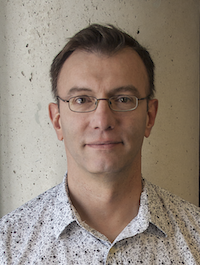
Sasa Stefanovic
Professor
MSc, University of Paris VI; PhD, University of Washington, Seattle
- Phone
- 905-569-4305
- Office
- DV 3039
- Lab
- DV 4090A
- sasa.stefanovic@utoronto.ca
Prospective Students:
I am currently accepting MSc and PhD students. Interested applicants should send a CV, an unofficial transcript along with a cover letter summarizing their research interests, academic background, and skills. Please check my lab website for additional details.
Research
My research employs molecular and traditional tools addressing plant systematics questions at both higher and lower taxonomic level as well as molecular mechanisms underlying organellar genome evolution in plants. The bulk of my research is centered on the systematics and molecular evolution of Convolvulaceae (the morning-glory family) in general and, more particularly, on a parasitic genus Cuscuta (dodders) found within that family. Convolvulaceae are one of the very few flowering plant families showing substantial structural differences in otherwise highly conserved plastid genome. The comparative approach on a broad taxon sampling within this family and in conjunction with a robust phylogenetic framework will help to address a series of testable hypotheses regarding the pattern and process of plastid genome evolution and their correlates at the organismal level.
More broadly, I am interested in a number of other related plant evolution topics, centered around the reliable inference of the plant tree of life at various phylogenetic levels, and the application of these phylogenies to evolutionary problems that stretch from genes and genomes to plant sexual systems and phylogeography. From the systematics point of view I am mostly interested in a species-level phylogeny. It is usually at this level that the most interesting biological questions regarding speciation, biogeography, character evolution, genome evolution, etc., can be tackled successfully. In molecular evolution field, I am particularly interested in changes that have shaped the plastid genome evolution in heterotrophic plants in general (both parasitic and mycotrophic), the shared and unique features characterizing different phylogenetic, ecological, and physiological groups of heterotrophs, as well as the extent of involvement of these very unusual plants in evolutionary phenomena such as horizontal gene transfer. I am also interested in patterns of mitochondrial evolution in land plants.
